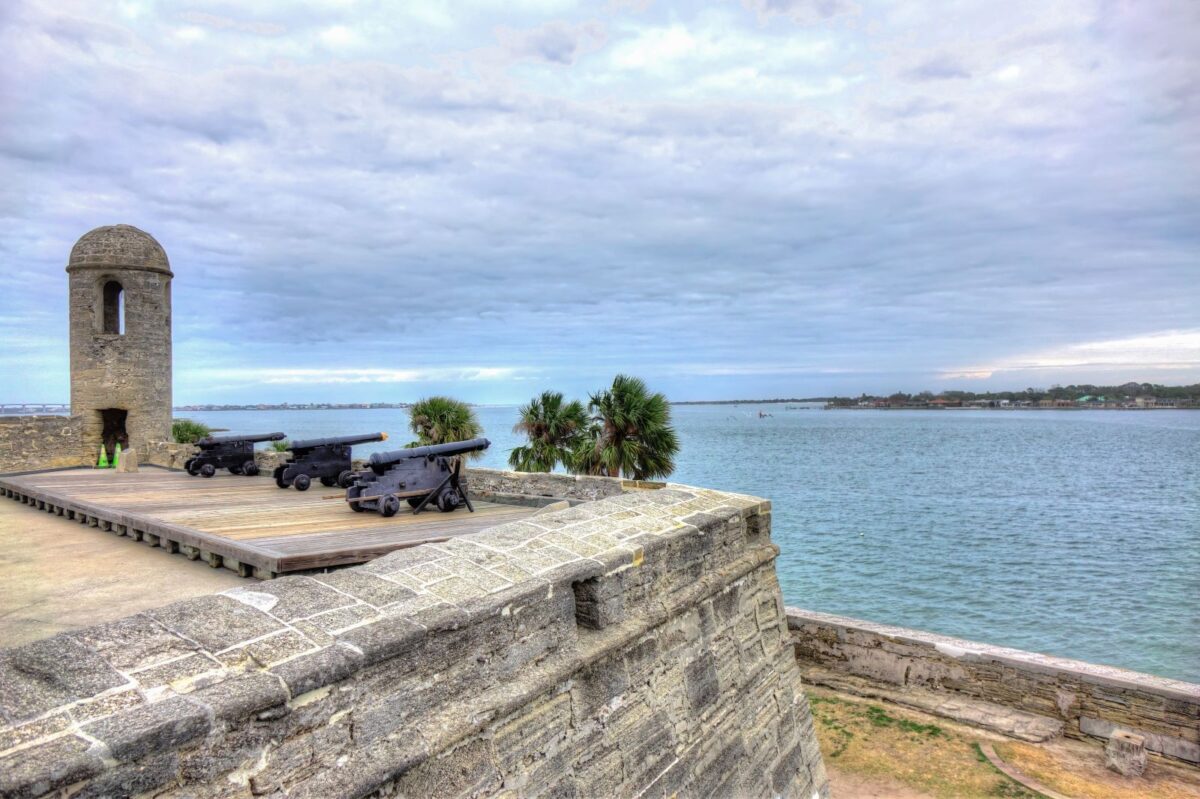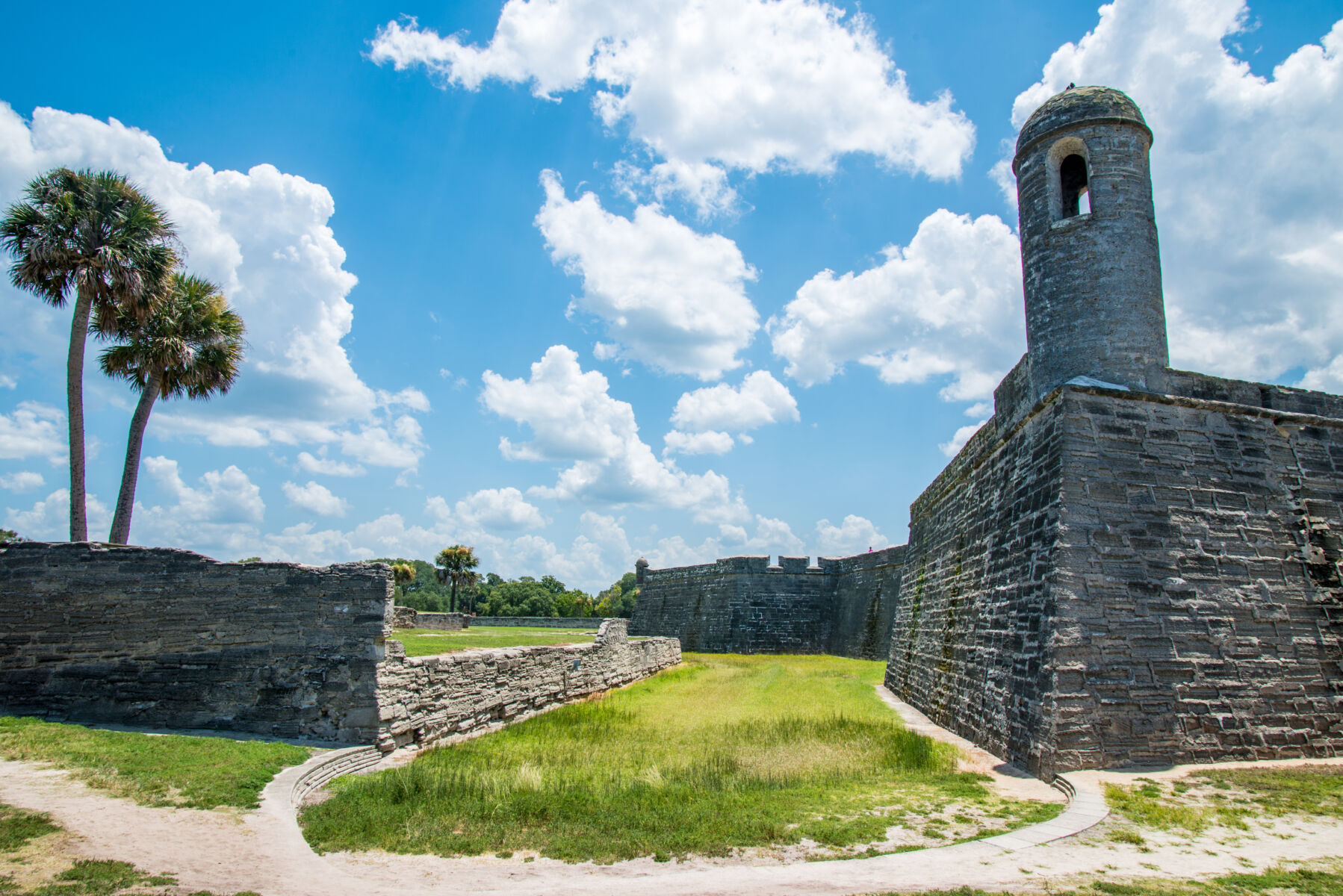The Castillo de San Marcos is possibly the most impressive attractions in St. Augustine. And the title is earned. This St. Augustine fort is an iconic part of the landscape- the most easily-identifiable marker representing the magic and ancient history of this very old northern Florida city.
Come and visit St. Augustine and see the fort for yourself. Here’s what you need to know about its history and visiting this must-see historic attraction.
Castillo de San Marcos
The Castillo de San Marcos is famous for being the oldest masonry fort in the continental United States. It was originally built by the Spanish estimated around the mid to late 1600s.
The fort oversees the Matanzas River, and sits on large landscaped grounds, with quaint walking and biking paths. Visitors often explore the immediate area with the river on one side, in view, and historic St. George Street on the other. While the fort has its own dedicated parking, any city visitors can use it. The fort is found at the end of St. George, so by utilizing any historic area parking lot or meter, you can get you close to its location.
Once at the fort, you can walk around and review the various rooms. There are many performance artists on-site to offer some instructions on era-specific tasks, like loading a musket and cleaning.
Don’t miss out on the highlight of any visit to the fort- the cannon firing! Recreation performers will march to battle, rally around the cannon, and shoot it off into the Matanzas River.

History of the Fort
The fort has an enthralling and sometimes bizarre history. It was “owned” by a multitude of different parties, vying and fighting for control over the centuries. It was maintained by the British, Spanish, and Americans all at different times as groups fought for the St. Augustine territory.
It was predominantly used during what is often called the colonial wars. Two particular sieges, one in 1702 and one in 1740, brought turmoil and violence to the fort and surrounding city. English forces invaded South Carolina in its first major attack, followed by a month-long attack from the British about 30 years later.
Both left St. Augustine weakened economically but intact, retaining Spanish control until it was calmly relinquished to US territories.
It was inevitably retired as a fort in the early 1900s and was transferred to the National Park Service in 1933. Now, the fort is labeled a national monument and stands as the city’s most visually-stunning and iconic attraction.
Find Your Rental
Don’t miss out on any of the excitement when staying at one of our St. Augustine beach rentals. Expand the scope of your St. Augustine vacation when you stay on Anastasia Island, the beachside half of St. Augustine. With just an 8-minute drive to downtown and to the fort, you can easily see the historic attractions. Review our full list of available St. Augustine condo rentals today and secure your vacation experience.
Plan Your Visit
The fort is undoubtedly one of the top things to see when visiting. Plan your visit to the fort with our four handy guide tips.
Opening Hours
Visit early or in the middle of the day to get the most out of your visit. You can visit early to avoid crowds and the weather, and you can visit mid-day to get the best chance to see a cannon firing.
Under the Sun
A large portion of the fort is right under the hot Florida sun. Keep this in mind when you visit. While there are nooks and crannies you can visit to hide under the shade, the majority of the fort, including the cannon firing area, is directly under the open sky.
One to Two Hours
Plan at least an hour to see all the various nooks of the fort. You can also take a little time out of your day to explore the grounds. You can even spot a dolphin in the water along the fort!
Plan Parking
Plan your parking and transportation ahead of time. The lot on-site gets filled up quickly. Consider public trolley transportation. It stops at least every 30 minutes at the fort.


